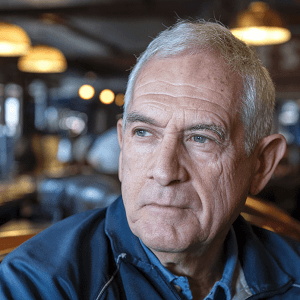Looking to revolutionize your lighting control system? The DH8 model is transforming how we manage complex lighting setups across industries. Let’s explore this innovative relay unit that’s bridging the gap between DALI and DMX control systems.
The DH8 model represents a breakthrough in relay unit technology, specifically designed for DALI/DMX control systems integration. While sharing its name with the DHC-8 aircraft series, this device serves a distinctly different purpose in the lighting control ecosystem, facilitating seamless communication between various lighting protocols.
What is the DH8 Model?
The DH8, also known as DH8(DT7), is a sophisticated relay unit that serves as a bridge between DALI and DMX control systems. Its primary functions include:
- Protocol translation between DALI and DMX systems
- Signal transmission optimization
- Comprehensive lighting control integration
- Smart building system compatibility
- Theatrical production support
History and Development of the DH8
The DH8’s development emerged from the growing complexity of lighting control systems. Its evolution represents a significant milestone in addressing the industry’s need for seamless protocol integration, particularly in sophisticated lighting environments.
Specifications and Features of the DH8
The DH8 model combines technical excellence with user-friendly features, making it a cornerstone in modern illumination management systems.
Technical Specifications of the DH8
| Feature | Specification |
|---|---|
| Protocol Support | DALI and DMX compatible |
| Channel Capacity | 8+ channels |
| Voltage Range | Multiple ranges supported |
| Documentation | Comprehensive technical data sheet |
Key Features of the DH8 Model
- Seamless protocol translation between DALI and DMX
- Programmable scene settings
- Advanced dimming capabilities
- Multiple fixture type support
- Remote management options
- Real-time monitoring and control
Performance and Applications of the DH8
The DH8’s versatility and robust performance metrics have established it as a crucial component in various lighting applications.
Performance Metrics of the DH8
The DH8 excels in managing multiple lighting channels with near-instantaneous response times, crucial for real-time lighting control scenarios. Its consistent performance and reliability make it ideal for professional lighting applications.
Common Applications of the DH8
- Entertainment venues (theaters, concert halls)
- Television studios
- Architectural lighting systems
- Smart building integration
- Museums and art galleries
- Retail spaces
- Commercial building management
Comparing the DH8 with Other Models
The DH8 model stands as a significant player in lighting control technology, particularly in its role of bridging DALI and DMX protocols. While sharing its designation with aircraft models like the DHC-8, this lighting control interface has carved its own niche in professional lighting systems.
| Comparison Factor | DH8 Advantages | Competitor Offerings |
|---|---|---|
| Protocol Support | Seamless DALI/DMX integration | Variable protocol compatibility |
| Integration Ease | High reliability and simplicity | Varies by manufacturer |
| Technical Support | Comprehensive assistance | Manufacturer dependent |
| Market Position | Established reliability | Competitive pricing focus |
DH8 vs Competitors
In the competitive landscape, the DH8 faces notable alternatives from manufacturers like Artistic Licence, Pathway Connectivity, and ELC Lighting. Each competitor brings unique strengths to the market, though the DH8 maintains its position through proven reliability and integration capabilities.
- Key competitive advantages of the DH8:
- Superior integration capabilities in complex setups
- Established market reputation
- Comprehensive technical support
- Proven reliability record
- Versatile application range
Maintenance and Cost of the DH8
The DH8’s solid-state design contributes to its minimal maintenance requirements and cost-effective operation. Unlike mechanical systems, it offers a streamlined maintenance approach while delivering consistent performance.
Maintenance Requirements for the DH8
- Regular software updates for compatibility
- Periodic connection inspections
- Power supply checks
- Ventilation system maintenance
- Firmware updates for security
Cost Analysis of the DH8
| Cost Category | Description |
|---|---|
| Initial Investment | Unit purchase and installation costs |
| Operational Costs | Low energy consumption, minimal maintenance |
| Software Updates | Generally included in purchase price |
| Long-term Value | Energy savings and reduced hardware needs |
User Reviews and Feedback on the DH8
The Double Hung Half Screen DH8 White has garnered significant attention with 157 documented reviews, demonstrating its widespread adoption and user engagement. This substantial feedback provides valuable insights into real-world performance across various applications.
Customer Experiences with the DH8
- Positive feedback highlights:
- Seamless protocol integration
- Reliable performance
- Energy efficiency improvements
- Enhanced lighting quality
- Versatile application support
Expert Opinions on the DH8 Model
Industry professionals consistently praise the DH8’s technical capabilities and its impact on lighting control advancement. The device’s ability to simplify complex setups while maintaining robust performance has earned it significant recognition in the professional lighting community.





Leave a Reply